L+150: Nanoparticles and Osteoporosis
Saturday
11:30
25/04/2015
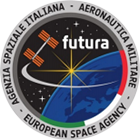
Saturday
11:30
25/04/2015
Thursday
08:52
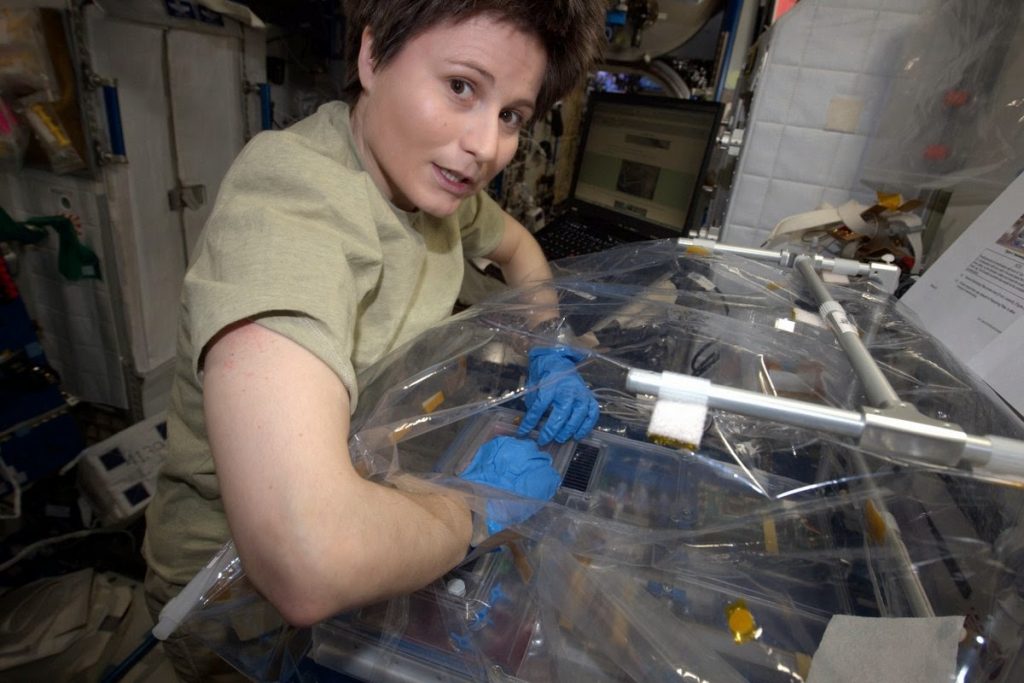 Futura mission website (Italian): Avamposto42
avamposto42.esa.int
#SamLogbook #Futura42
(Trad IT) Traduzione in italiano a cura di +AstronautiNEWS
qui: https://www.astronautinews.it/tag/logbook
(Trad FR) Traduction en français par +Anne Cpamoa ici: https://spacetux.org/cpamoa/category/traductions/logbook-samantha
(Trad ES) Tradducción en español por
+Carlos Lallana Borobio
https://laesteladegagarin.blogspot.com.es/search/label/SamLogBook
(Trad DE) Deutsch von https://www.logbuch-iss.de
Futura mission website (Italian): Avamposto42
avamposto42.esa.int
#SamLogbook #Futura42
(Trad IT) Traduzione in italiano a cura di +AstronautiNEWS
qui: https://www.astronautinews.it/tag/logbook
(Trad FR) Traduction en français par +Anne Cpamoa ici: https://spacetux.org/cpamoa/category/traductions/logbook-samantha
(Trad ES) Tradducción en español por
+Carlos Lallana Borobio
https://laesteladegagarin.blogspot.com.es/search/label/SamLogBook
(Trad DE) Deutsch von https://www.logbuch-iss.de23/04/2015
Tuesday
13:41
21/04/2015
Monday
10:44
20/04/2015
Friday
09:28
17/04/2015
Wednesday
12:22
08/04/2015
Wednesday
11:55
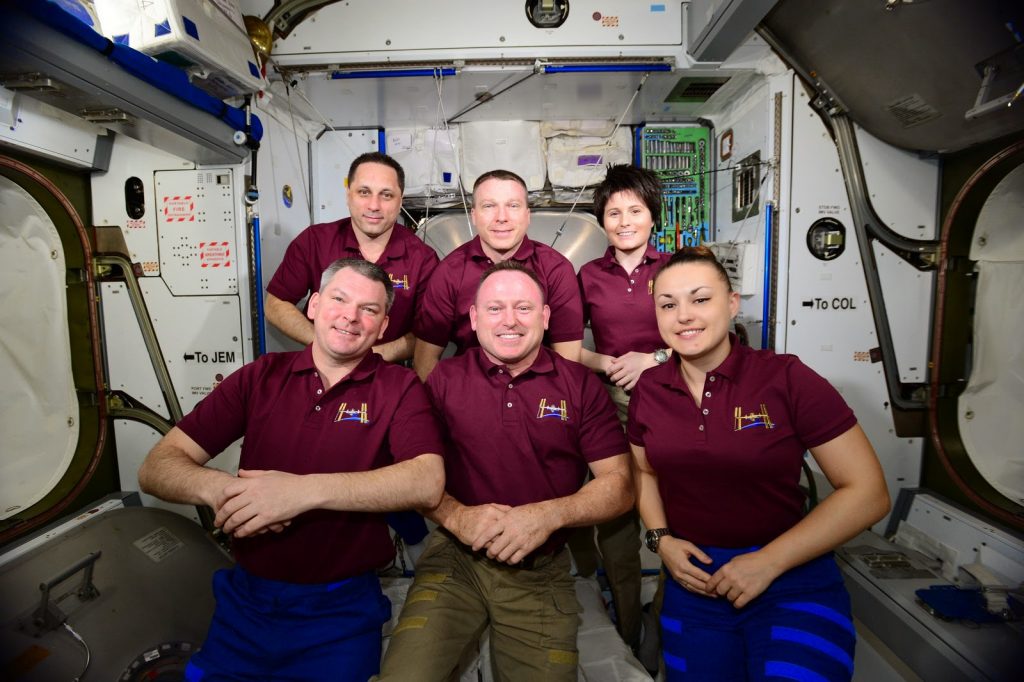 Recording video messages or educational videos for outreach purposes is also typically on the task list, as well as a couple of procedures that are permanent entries: changing the solid waste container and the urine container in our space toilet. After the first couple of times, you don’t really need a procedure for that, but an activity also has a stowage note attached, which in this case tells you which new containers to get, where to find them and where to stow the removed ones.
As you know, every item is tracked on the Space Station: by part number, barcode , serial number.. or all three of them!
Things still get lost occasionally, unfortunately. We’re all humans and as such are prone to making mistakes: if something ends up in the wrong place (in the real world or in the inventory system), who knows when it’s going to be found! Also, things accumulate over time that should actually have been disposed of a long time ago. Not unlike most people’s homes, we can’t afford to accumulate things that are no longer necessary, because we need the space for new hardware to support the science program.
The European laboratory Columbus, after having been on orbit for about 7 years now, has seen a little bit of that. When I arrived back in November there were quite a few stowage bags on the rack fronts: so much science going on, so little space to stow the equipment! Luckily ATV5 and SpX-5 took away some bags that were no longer used and some optimization of the available volume in the endcone has cleaned up the cabin quite a bit.
In order to optimize more, on the weekends I have been doing photo-audits of our main stowage rack in Columbus, the Deck 4 rack. The stowage team at COL-CC, the COSMOs, want to have the full picture of what’s in those lockers, in order to devise a consolidation plan that will hopefully save some space! So I have been snapping away… patiently, locker by locker, bag by bag, item by item, nicely showing all the barcodes and serial numbers.
And you thought that being an astronaut was all glamour and adrenaline, didn’t you?
Futura mission website (Italian): Avamposto42
avamposto42.esa.int
#SamLogbook #Futura42
(Trad IT) Traduzione in italiano a cura di +AstronautiNEWS
qui: https://www.astronautinews.it/tag/logbook
(Trad FR) Traduction en français par +Anne Cpamoa ici: https://spacetux.org/cpamoa/category/traductions/logbook-samantha
(Trad ES) Tradducción en español por +Carlos Lallana Borobio
aqui: https://laesteladegagarin.blogspot.com.es/search/label/SamLogBook
(Trad DE) Deutsch von https://www.logbuch-iss.de
Recording video messages or educational videos for outreach purposes is also typically on the task list, as well as a couple of procedures that are permanent entries: changing the solid waste container and the urine container in our space toilet. After the first couple of times, you don’t really need a procedure for that, but an activity also has a stowage note attached, which in this case tells you which new containers to get, where to find them and where to stow the removed ones.
As you know, every item is tracked on the Space Station: by part number, barcode , serial number.. or all three of them!
Things still get lost occasionally, unfortunately. We’re all humans and as such are prone to making mistakes: if something ends up in the wrong place (in the real world or in the inventory system), who knows when it’s going to be found! Also, things accumulate over time that should actually have been disposed of a long time ago. Not unlike most people’s homes, we can’t afford to accumulate things that are no longer necessary, because we need the space for new hardware to support the science program.
The European laboratory Columbus, after having been on orbit for about 7 years now, has seen a little bit of that. When I arrived back in November there were quite a few stowage bags on the rack fronts: so much science going on, so little space to stow the equipment! Luckily ATV5 and SpX-5 took away some bags that were no longer used and some optimization of the available volume in the endcone has cleaned up the cabin quite a bit.
In order to optimize more, on the weekends I have been doing photo-audits of our main stowage rack in Columbus, the Deck 4 rack. The stowage team at COL-CC, the COSMOs, want to have the full picture of what’s in those lockers, in order to devise a consolidation plan that will hopefully save some space! So I have been snapping away… patiently, locker by locker, bag by bag, item by item, nicely showing all the barcodes and serial numbers.
And you thought that being an astronaut was all glamour and adrenaline, didn’t you?
Futura mission website (Italian): Avamposto42
avamposto42.esa.int
#SamLogbook #Futura42
(Trad IT) Traduzione in italiano a cura di +AstronautiNEWS
qui: https://www.astronautinews.it/tag/logbook
(Trad FR) Traduction en français par +Anne Cpamoa ici: https://spacetux.org/cpamoa/category/traductions/logbook-samantha
(Trad ES) Tradducción en español por +Carlos Lallana Borobio
aqui: https://laesteladegagarin.blogspot.com.es/search/label/SamLogBook
(Trad DE) Deutsch von https://www.logbuch-iss.de08/04/2015
Saturday
17:56
04/04/2015
Friday
13:30
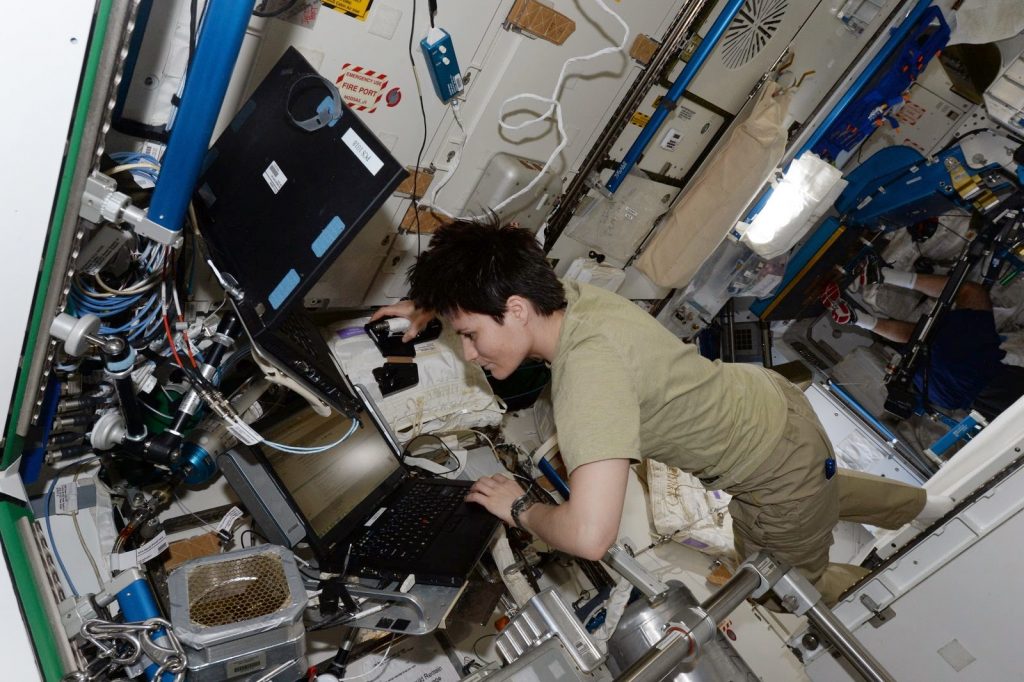
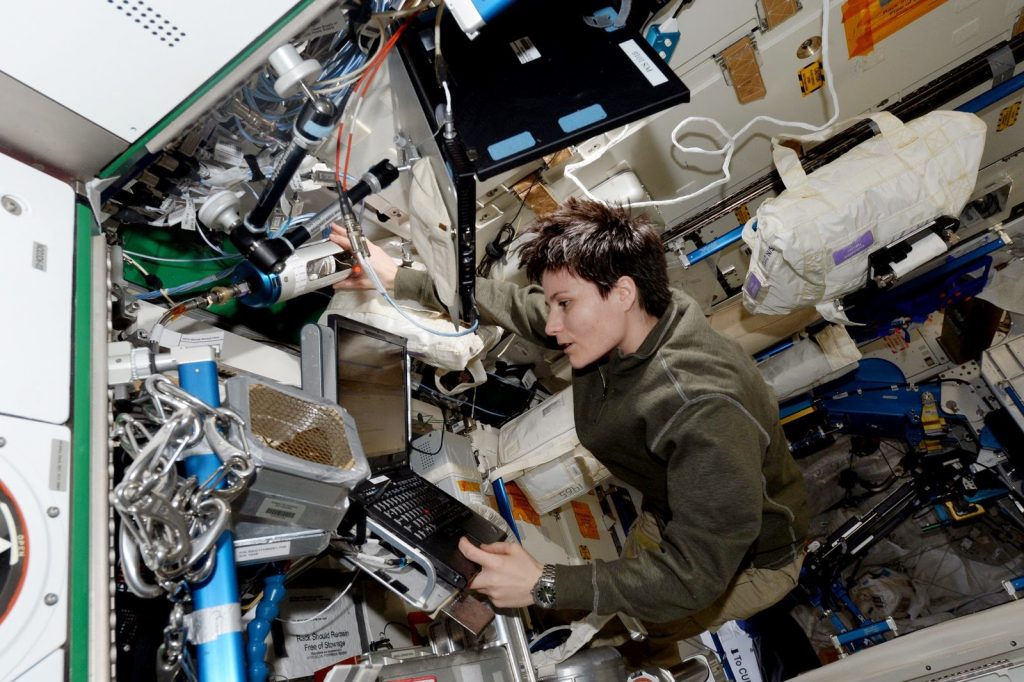
We keep water in these bags, called CWC-I. The letter “I” (and the color purple on the label) indicate that it contains iodinated water – iodine is added to our potable water for microbial control, but is eventually removed in the potable water dispenser before water is delivered to the end user (us).It’s important to have proper labels on the bags: brown labels, for example, indicate condensate (recuperated water before reprossessing).
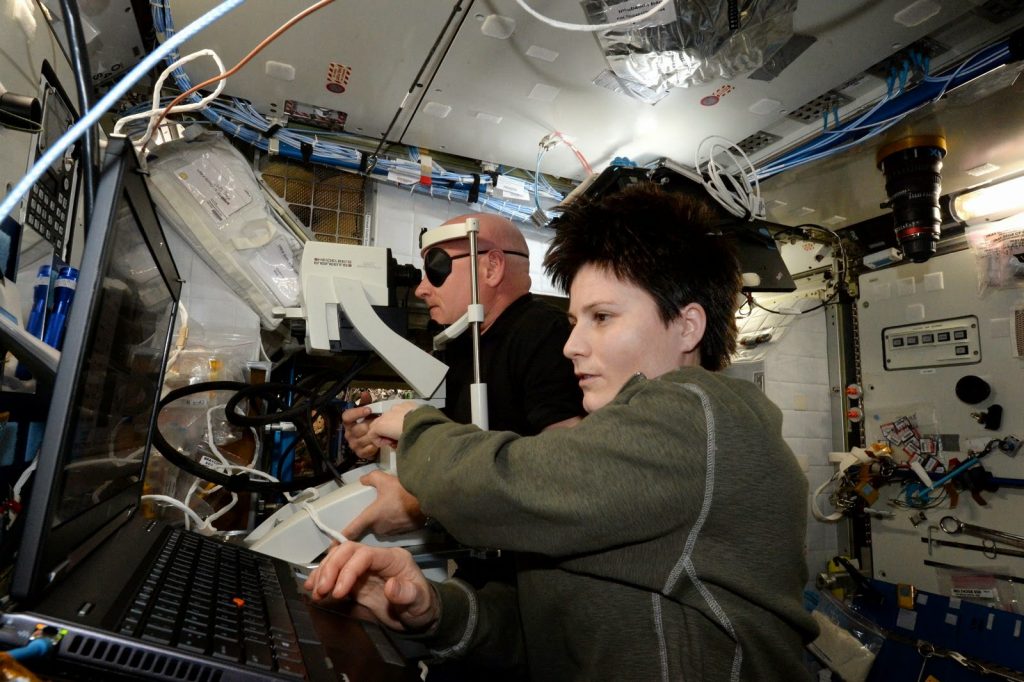
Scott and I working on his first scans with the Optical Coherence Tomograph. He will repeat these scans every month for the next year!
03/04/2015
Thursday
12:06
As you’ve probably noticed, I haven’t been writing much this past month – my evenings have been just flying away, divided between the irresistible pull of the Cupola, other outreach projects and many little personal things that need to be taken care of.
During the day the Space Station keeps us really busy with science, maintenance, housekeeping, logistics and maintaining our proficiency in emergency responses, robotics, Soyuz flying…you name it. The variety of things we do up here is mind blowing, if I stop to think about it.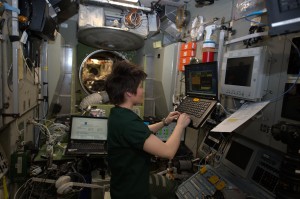 Oh, and by the way, we also had a Soyuz undock earlier this month, taking home half of our Space Station population. Well, at least in terms of human presence – I’m sure the microorganisms living up here, who outnumber us by orders of magnitude, would claim that it’s “their” Space Station and don’t care much if three biped mammals are replaced by three different ones. We, on the other, do care.
It was hard to see Sasha, Butch and Elena leave after being so close for four months and we did become just a little bit apprehensive when communication with their Soyuz was lost during the engine burn, which was somewhat unexpected. So we were happy to hear from Moscow that the search & rescue teams had made contact with the capsule and even happier to see our friends’ smiling faces as they got their first breaths of fresh air in Kazakhstan.
In case you’re wondering, we saw them on NASA TV, like many of you, I reckon. Not sure I mentioned before, but we can get a TV station transmitted live on one of our laptops when we have satellite coverage for the Ku-Band antennas.
For a couple of weeks the Space Station felt even bigger than usual, with Terry, Anton and I as the only (human) inhabitants. Not only were there fewer people around, but of course we were only getting half of the work done, so there was less com on space-to-ground. Overall, if felt a lot quieter. And now we’re back to six!
Scott, Gennady and Misha have joined us last week and have added their personalities to the mix to create the new dynamic of Expedition 43. It’s such an invaluable opportunity to be part of two different crews: in the end, it’s the human interactions that determine our experience up here, so in a way it’s like having two space missions instead of one. And if you have such awesome crewmates as I have had on Expedition 42 and have now on Expedition 43… well, life is good! Also, Terry and I have it really easy in terms of handover: Scott has already been up here for six months just 4 years ago, so he really doesn’t need the amount of guidance and coaching (and patience!) that we required at the beginning from Butch. Scott is basically already autonomous and has already given some inputs that have improved our life and work. Always good to add a new perspective to the equation!
So, here we are, it’s April 1st already and, barring changes, my Soyuz will undock on May 14th. With me onboard, unless I hide really well. I have only 42 days left on ISS, which is of course a cool number, but it’s also not much. If I sound a little sad saying this, it’s because I am.
Anyway, with so little time left I am committed to resume regular logbooks: there is so much still that I have to share with you! I thought I’d start by sharing some picture of life and work from the past four months: check out the captions for some insight. Talk to you soon!
Oh, and by the way, we also had a Soyuz undock earlier this month, taking home half of our Space Station population. Well, at least in terms of human presence – I’m sure the microorganisms living up here, who outnumber us by orders of magnitude, would claim that it’s “their” Space Station and don’t care much if three biped mammals are replaced by three different ones. We, on the other, do care.
It was hard to see Sasha, Butch and Elena leave after being so close for four months and we did become just a little bit apprehensive when communication with their Soyuz was lost during the engine burn, which was somewhat unexpected. So we were happy to hear from Moscow that the search & rescue teams had made contact with the capsule and even happier to see our friends’ smiling faces as they got their first breaths of fresh air in Kazakhstan.
In case you’re wondering, we saw them on NASA TV, like many of you, I reckon. Not sure I mentioned before, but we can get a TV station transmitted live on one of our laptops when we have satellite coverage for the Ku-Band antennas.
For a couple of weeks the Space Station felt even bigger than usual, with Terry, Anton and I as the only (human) inhabitants. Not only were there fewer people around, but of course we were only getting half of the work done, so there was less com on space-to-ground. Overall, if felt a lot quieter. And now we’re back to six!
Scott, Gennady and Misha have joined us last week and have added their personalities to the mix to create the new dynamic of Expedition 43. It’s such an invaluable opportunity to be part of two different crews: in the end, it’s the human interactions that determine our experience up here, so in a way it’s like having two space missions instead of one. And if you have such awesome crewmates as I have had on Expedition 42 and have now on Expedition 43… well, life is good! Also, Terry and I have it really easy in terms of handover: Scott has already been up here for six months just 4 years ago, so he really doesn’t need the amount of guidance and coaching (and patience!) that we required at the beginning from Butch. Scott is basically already autonomous and has already given some inputs that have improved our life and work. Always good to add a new perspective to the equation!
So, here we are, it’s April 1st already and, barring changes, my Soyuz will undock on May 14th. With me onboard, unless I hide really well. I have only 42 days left on ISS, which is of course a cool number, but it’s also not much. If I sound a little sad saying this, it’s because I am.
Anyway, with so little time left I am committed to resume regular logbooks: there is so much still that I have to share with you! I thought I’d start by sharing some picture of life and work from the past four months: check out the captions for some insight. Talk to you soon!
02/04/2015